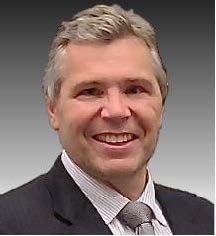|
IEEE ICMA 2023 Conference
Plenary Talk
3
Occupational Exoskeletons
Improving Worker Health and Industrial Efficiency
Prof. Darwin G Caldwell, FREng FIEEE
Founding Director
Italian Institute of Technology (IIT)
Director, Department of Advanced Robotic IIT
Via Morego 30, 16163 Genoa, Italy
Email: darwin.caldwell@iit.it

Abstract: Workers commonly perform manual handling tasks such as lifting, pushing, pulling or carrying heavy loads but this can often lead to injury. Globally, over 30% of workers must perform some form of Manual Material Handling (MMH), while 63% have work that involves repetitive (low load) movements, and 46% are exposed to awkward body postures. As a result, every year more than 40% of workers suffer from lower back or neck/shoulder pain. This makes Musculo-Skeletal Disorders (MSD), the leading cause of work-related health problems. This has important impacts on the worker, their employer and society in general due to: sickness absence, injuries and disability, increased costs, higher employee turnover, and lower productivity. It can lead to injuries that can have a lifelong debilitating effect. In the EU it is estimated that 2% of GDP is lost due to work-related MSDs.
Exoskeletons are personal assistive technologies (wearable devices) that can provide a level of additional mechanical power, or endurance to the human body. Hence they can reduce the biomechanical load, allowing users to perform tasks that they might otherwise find too physically demanding. Recently with increased awareness of workplace health and safety needs exoskeletons and wearable technology have been seen as a viable option in the prevention of Musculo-skeletal injuries. Manufacturing, and related industries such as automotive, assembly/disassembly, transportation systems, construction, logistics, aviation, and healthcare are now starting to see the opportunities for various forms of exoskeletons and assistive devices.
This presentation will explore the background to MSDs, and the global development of exoskeletons. Subsequently it will focus on systems developed at IIT such as the XoSoft, XoTrunk, XoShoulder and XoElbow. I shall explore the factors influencing their design and operation, and the potential uses, benefits and challenges afforded by the use of occupational exoskeletons. Finally, I shall demonstrate their use in real world applications, how this has lead to spin-off commercial activities, analyse where, and how, this technology can be applied and where further development is needed.
Prof. Darwin G Caldwell is Founding Director of the Istituto Italiano di Tecnologia (IIT) in Genova, and Director of the Dept. of Advanced Robotics (ADVR) at IIT. He holds a B.Sc (1986) and Ph.D. (1990) in Robotics from the University of Hull and an M.Sc in Management (1996) from the University of Salford. He has pioneered developments in compliant and variable impedance actuation, Soft and Human Friendly Robotics and the creation of 'softer', safer robots, that draw on developments in materials, mechanisms, sensing, actuation and software. These developments have been fundamental to advances in humanoids, quadrupeds, medical robotics and exoskeletons. Key robots developed by his team include: iCub, a child-sized humanoid robot; COMAN, a controllably compliant humanoid designed to safely interact with people and have more natural (loco)motion; , a human-robot symbiotic system capable of robust locomotion and dexterous manipulation in rough terrain and harsh environments. In addition to his research in legged robots, Prof. Caldwell also works extensively to develop wearable and haptic systems including whole body exoskeletons such as the XoSoft, XoTrunk, XoShoulder and XoElbow and in surgical and rehabilitation robotics where his team have developed systems such as the CALM (Computer Aided Laser Microsurgery) systems, the Cathbot, Cathbot-Pro and SVEI (for catherization and tissue type detection) and the Arbot (Ankle rehabilitation robot).
Caldwell is or has been an Honorary professor at the Universities of Manchester, Sheffield, Bangor and King's College London in the UK, and Tianjin University in China. He has published over 700 papers, has over 25 patents and has received over 50 awards/nominations at international conferences and events. He is a Fellow of the Royal Academy of Engineering (FREng - UK’s National Academy) and the IEEE (FIEEE) and a Chartered Engineer (CEng).
|